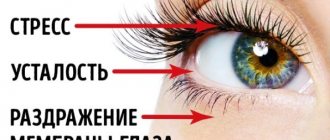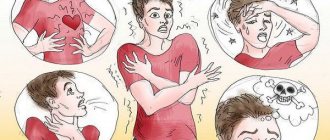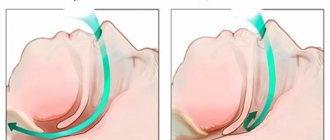In ancient times, people believed that the Moon influences not only the tides of the sea, but also the human psyche, and it is this night star that makes some people get out of their beds at night and walk in their sleep. Therefore, in the past, healers called the phenomenon of sleepwalking sleepwalking. But the influence of the Moon is one of the most harmless reasons that were used in ancient times to explain sleepwalking, because in the dark Middle Ages, sleepwalkers were often declared witches or possessed. Fortunately, now the times of the Inquisition and ignorance are a thing of the past, and modern scientists have studied sleepwalking in detail, identified its causes and ways to help the sleepwalker. Let's take a closer look at exactly what signs characterize sleepwalking, why people sleepwalk at night, and how to save yourself or a loved one from night walks.
Why does a child grind his teeth in his sleep: reasons
Experts are not always sure about the causes of bruxism. There are several options why children experience grinding at night:
- Incorrect bite. This is when the upper and lower teeth are not aligned properly;
- Other babies do it as a response to pain, such as ear pain or teething. Children may grind to relieve pain;
- If you have a disease - epilepsy, cerebral palsy. Or the child is taking certain medications that may develop grinding;
- During adolescence, teeth grinding at night can be caused by smoking and drinking alcohol;
- Heredity. Bruxism can be passed on to children if parents suffer from this disease;
- Another reason is stress. This is usually nervous tension or anger. For example, your child may be anxious about a test at school or because of a change in their routine;
After the age of six, many children outgrow teeth grinding.
Reasons why people sleepwalk at night
Sleepwalking only from the outside seems like something mysterious and even mystical, but for people suffering from this disorder, it is exclusively a cause of inconvenience, and sometimes even danger. Many somnambulists, aware of the danger looming over them, strive to prevent attacks with the help of sleeping pills, but such treatment is ineffective, because all such drugs sooner or later become addictive. Therefore, in order to cure this disorder, it is necessary to eliminate its cause. And according to doctors, in most cases the reasons why people sleepwalk at night are:
- Impaired brain functionality and the formation of a focus of epileptic readiness in the temporal lobe of the hemispheres. The brain of a completely healthy person “rests” during sleep, and those parts of the brain that are responsible for coordination of movements, control of limbs and speech are inactive in the deep sleep phase. However, in people who have nerve disorders or early stage epilepsy, brain function may be impaired. As a result of this disorder, during sleep, areas of the brain that should “rest” actively function and control the human body. As a rule, the results of the encephalogram of sleepwalkers show areas of the brain that are not functioning correctly.
- Severe stress. Stress, nervous breakdowns and increased anxiety negatively affect the functioning of the human nervous system, as a result of which malfunctions may occur in certain areas of the brain. Since each person’s psyche is individual, the consequences of nervous breakdowns are different for everyone - someone becomes irritable and aggressive, someone loses their ability to work, someone begins to experience memory problems, and someone “earns” sleep disorders and somnambulism .
People who engage in intellectual work and regularly endure excessive workloads sooner or later face the fact that their brain is unable to cope with the flow of information received. As a result, even during sleep, the brain cannot rest and tries to work at full capacity. Most often, it is for this reason that sleepwalking occurs in children and adolescents who have difficulty coping with school and extracurricular activities.
Excessive intellectual load.- Other sleep disturbances and deterioration in general health. Sometimes single attacks of sleepwalking occur in people suffering from chronic lack of sleep or insomnia, as well as in those who go to bed with a headache and fever. Both lack of sleep and physiological disorders in the body affect the functioning of the nervous system, which is why the brain may not completely switch to “sleep mode”, and certain parts of it will function in “wakefulness mode”.
If we consider the main reasons why people sleepwalk at night, we can conclude that the source of most of them are psychological problems - constant stress, inability to rest and relax, increased anxiety and inattention to one’s own health. And by eliminating these causes, you can significantly reduce the number of attacks of sleepwalking or completely get rid of somnambulism.
Diagnostics
Most children who have this problem during night or daytime sleep do not even know about it. Therefore, most often, parents diagnose the problem.
Some signs:
- Teeth grinding when your baby sleeps;
- Complaints of pain in the face or jaw after waking up in the morning;
- Pain when chewing.
If you experience any of these signs, contact your dentist to examine your mouth for wear and damage. Spray air and water on teeth to test sensitivity.
If damage is found, the dentist may ask your child several questions, such as:
- How do you feel before bed?
- Are you worried about anything at home or at school?
- Are you angry with someone?
- What do you do before bed?
The exam will help the dentist understand whether the cause is anatomical (misaligned teeth) or psychological (stress). Select an effective treatment plan.
Features and dangers of somnambulism
Nowadays, the term sleepwalking is no longer used, and people who tend to walk, gesticulate and talk in their sleep are called sleepwalkers only colloquially. Doctors call this sleep disorder somnambulism, and those who suffer from this disorder - somnambulists. And according to the dictionary of medical terms, somnambulism is a painful sleep disorder in which a person moves, talks or performs any actions while in a state of deep sleep.
Somnambulism is a fairly common disorder, as it affects about 2% of the inhabitants of our planet , most of them teenagers and young people under 22 years of age. According to statistics, up to 15% of children and adolescents occasionally or regularly talk, sit up in bed and even walk in their sleep, but upon reaching the age of 15-19, approximately three-quarters of young sleepwalkers “outgrow” this disorder.
Contrary to the common belief among the common people that sleepwalkers necessarily get out of bed and go outside the bedroom in their sleep, in most cases this disorder manifests itself less clearly. In general, doctors distinguish two forms of somnambulism - mild and severe, and each form of the disorder is characterized by the following:
- A mild form is a mild course of the disorder, in which attacks occur no more than 2-3 times a month, and the person does not get out of bed during attacks and does not perform any complex actions. As a rule, with a mild form of sleepwalking, people talk or grind their teeth in their sleep, and can also sit up in bed, gesticulate, pick up and move objects lying on the bedside table, etc.
- A severe form is a form of sleepwalking in which a person walks and performs complex actions in his sleep. Some sleepwalkers do household chores in their sleep, some eat, some simply wander around the house. During his “nightly adventures,” a sleepwalker can leave not only the bedroom, but also the house, walk to another area of the city, start a car, and even go to work or to see friends.
Regardless of the severity of the disorder, during nocturnal activity all sleepwalkers look almost the same - their eyes are wide open, their movements and gestures are somewhat constrained and mechanical, and there is practically no facial expression, which is why their facial expression seems detached. The attack of sleepwalking itself in most cases lasts a maximum of 30-40 minutes, although in psychiatric practice there have been cases when a person remained in a similar state for more than 2 hours. After the attack is over, the person returns to his bed, takes a comfortable position and sleeps peacefully until the morning. Waking up in the morning, the somnambulist will not remember anything that he did during the night attack.
Somnambulism itself, according to doctors, does not pose a particular danger to health and has little effect on the quality of sleep, since most sleepwalkers, even on those nights when they had attacks, slept well and felt cheerful and rested in the morning. However, there is still a danger in somnambulism , and it lies in the fact that when making any movements and actions in a dream, the somnambulist can be injured, provoke an accident, or even commit a crime. For example, sleepwalkers who go outside while sleeping can get hit by a car, and those who do household chores while asleep can drop something heavy on themselves, flood the apartment, or even open the valves on the gas stove.
Helping children with bruxism
Whether the cause is physical or psychological, children can control bruxism by relaxing before bed—for example, taking a warm bath or shower, listening to soothing music for a few minutes, or reading a book. For infants who are teething, you can offer them a pacifier. She will calm the baby and give a light massage to the gums.
If you are teething or have an ear infection, ask your doctor to prescribe the correct dose of ibuprofen to relieve discomfort.
If teeth grinding is caused by stress, ask about what is upsetting your baby and find solutions.
In rare cases, when stressful situations cannot be resolved within the family circle and sleep problems arise, the help of a psychologist is required. He will help you find the cause of stress and prescribe the right course of treatment.
Ways to get rid of somnambulism
For most somnambulists, in order to get rid of a sleep disorder, it is enough to reduce the level of anxiety, learn to fully rest and adhere to a sleep schedule . This is especially true for children and adolescents who walk and talk at night because their brains cannot cope with the stress.
However, we cannot exclude a more serious and dangerous cause of somnambulism, namely the emergence of a focus of epileptic readiness in the brain. Therefore, in order to exclude this symptom or identify epilepsy at an early stage, people who have begun to walk at night need to undergo a full examination, including an encephalogram .
If the suspicion of a serious illness is not confirmed, the doctor will prescribe a complex treatment for the sleepwalker, which includes taking medications that improve the quality of sleep and have a sedative effect on the nervous system, and recommendations for maintaining a healthy lifestyle. Doctors also often recommend that somnambulists change their environment, go to a resort or sanatorium.
In cases where measures need to be taken immediately, since in a dream a person can harm himself or get into a dangerous situation (sleepwalkers who go out into the street in a dream, get behind the wheel, etc.), the somnambulist himself or his relatives must do everything to prevent sleepwalking. It is very difficult to wake up sleepwalkers when they are walking in their sleep , so it is better to make sure that the person either cannot leave the bed/bedroom, or that he wakes up on his own. To do this, somnambulists are tied to the bed, locked in the bedroom, or a wet towel is placed near their bed so that the person who steps on it wakes up due to the feeling of cold. These simple measures will help prevent the occurrence of a dangerous situation, but you should remember that it is better not to “play it safe” every evening, but to try to get rid of somnambulism, improving your overall physical and mental health.
Is there any meaning in the words of the sleeping man?
Many people think that what a person says in a dream is his secret thoughts and desires, as if it works, like with that proverb about a drunk who has everything on his tongue. Now, this is not true. According to the International Classification of Sleep Disorders, talking does not reflect previous behavior or memories.
Not only is up to 60% of what is said incomprehensible, but the rest simply doesn’t make any sense. It’s as if a neural network randomly formulated phrases according to the syntactic norms of the language.
In any case, dream speaking has so far been studied very poorly; there are real fears that scientists will soon refute everything that they have claimed before.
Potential danger
Many people are interested not only in the question of why people sleepwalk at night, but also in how much this condition threatens the patient or others. Somnambulism is not a fatal illness. However, during night walks the patient poses a potential danger to himself and others. He may get injured, jump out of a window, fall from a roof, or get into a car accident. There are cases when such patients committed acts of a criminal nature. Relatives of individuals suffering from this disorder should not wake them up abruptly. Such exposure can cause stress.
Does modern medicine recognize sleepwalking?
Scientists of past centuries considered sleepwalkers to be special people associated with the phases of the Earth's satellite. But modern science believes that:
- Somnambulism as a sleep disorder occurs as a result of overwork and stress.
- Movement during sleep begins in the phase of deep inhibition of the brain. At the same time, the subcortex of a sleepwalker does not turn off, but sends signals to perform actions.
- The attack lasts from several minutes to half an hour.
- It is necessary to protect the sleepwalker from injury by removing objects with sharp corners and made of glass from the room.
On a note!
You can't scare a sleepwalker! This can lead to serious disruptions in the functioning of his nervous system!
Factors contributing to the development of pathology in adults
Adult individuals rarely suffer from this disorder. As a rule, it is of a secondary nature. Why do people sleepwalk at night and talk in their sleep? The reasons for the development of the disorder in adults may be:
- chronic lack of sleep;
- psychological stress;
- hemicrania;
- neoplasms in the brain;
- neuroses;
- dementia in old age;
- Parkinson's disease;
- mechanical damage to the brain;
- epilepsy;
- severe form of arrhythmia;
- breathing disorders during sleep;
- cerebral vascular pathologies;
- gestation period and critical days;
- asthmatic attacks during sleep;
- decrease in glucose concentration in diabetes;
- eating large amounts of food at night;
- unbalanced diet;
- taking alcohol-containing products, drugs, medications.
Cause of sleepwalking
Scientists interested in studying this phenomenon have identified the reason: it is the tendency for foci of excitation to form in areas of the human brain during the deep phase of slow-wave sleep. As a rule, impressionable people suffer from this .
About 15% of children and 2% of the adult population of the planet suffer from somnambulism. Children are more prone to manifestations of sleepwalking for the simple reason that their bodies are actively developing and, accordingly, a restructuring of the brain takes place. It also has a big impact that they absorb a huge amount of information every day. The cause of sleepwalking in a child may be a psycho-emotional background: fatigue, stress, insomnia. An increase in temperature can also trigger an attack of sleepwalking.
Who is at risk?
One of the main questions is who is at risk for developing sleepwalking? “Children from 4 to 16 years old are most often susceptible to sleepwalking. As a rule, this disease is inherited. If signs and episodes of sleepwalking appear in adulthood, then this is a consequence of chronic fatigue, constant stress and insomnia. Signs of the disease are a frozen gaze and constriction of the pupils, talking in sleep, any involuntary movements and actions in sleep,” explains the neurologist.
Can sleepwalking occur again in adulthood? More details
There are a number of reasons that provoke the development of the disease, experts note. “The causes of sleepwalking in adulthood can be psychosomatic disorders, long-term treatment with psychostimulants, sleeping pills and sedatives, epilepsy, migraines, acute attacks of bronchial asthma, lack of magnesium in the body, neuroses and panic attacks, alcohol and drug abuse, and also in some cases — malignant tumors of the brain,” says Svetlana Kuznetsova.











